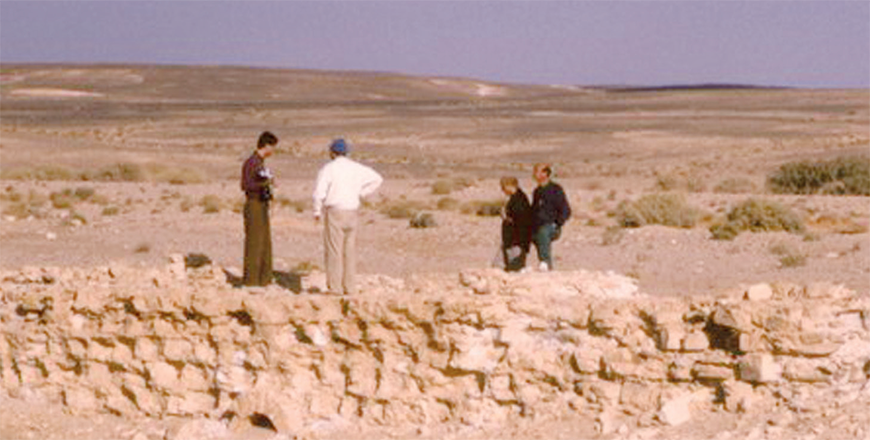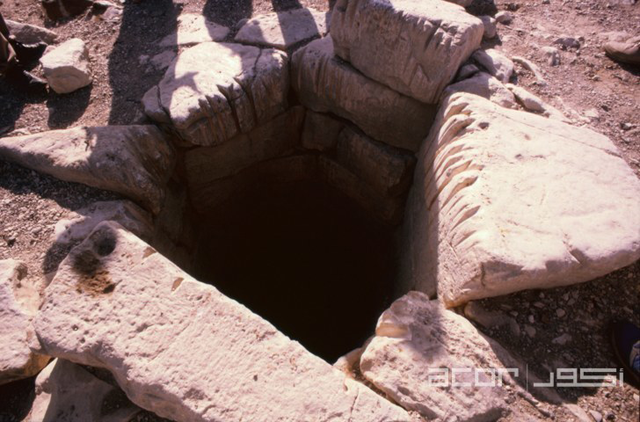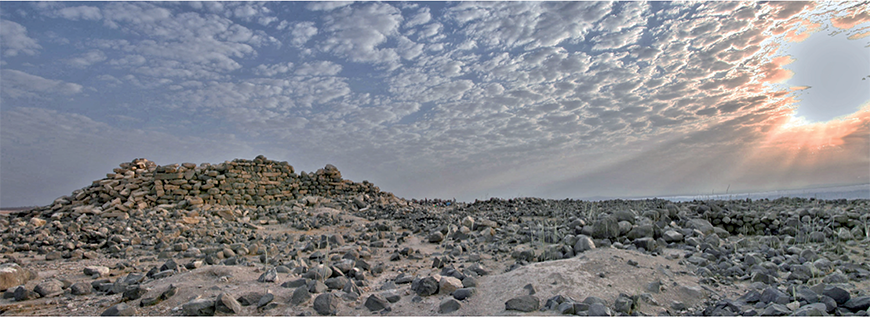You are here
Epigraphic journey in wadi Bayir: Interpreting Nabataean inscriptions
By Saeb Rawashdeh - Feb 22,2024 - Last updated at Feb 22,2024

The structure in Bayir, a water station for caravans during ancient trade between Hijaz and Biladi Sham (Photo courtesy of ACOR)
AMMAN — Bayir was a water station and an old caravan post located in south-eastern Jordan. During ancient times, the incense trade was a significant source of income for the Arabian tribes, the Nabataean Kingdom and all parties involved, connecting the southern shores of the Arabian Peninsula with Gaza, Bosra and Babylonia on the northwest and north. Wadi Bayir itself is a 100km long valley that runs through the southeast to northeast directions, connecting Syria and Babylonia to Arabia.
For many years, both Jordanian and foreign epigraphists studied inscriptions in that remote part of Jordan and some of them pointed to the Nabataean political dominance of the local tribes and ethnic groups.
“Arabian tribes used Nabataean as a language of commerce with their communication matrix,” said Hani Hayajneh from Yarmouk University in Irbid, adding that bilingual inscriptions and/or Nabataean inscriptions cannot give a certain answer about the ethnic background of the authors of inscriptions found in the Hishma region.
Inscriptions have a significant cultural aspect as they mentioned common deities of Ammonites, Moabites and Edomites as well as to forming of tribes in Transjordan in the 1st century BC.
“The text may suggest that Iron Age Transjordanian political entities, Ammon, Moab and Edom were organised along tribal lines, not as defined political and territorial units with rigid administrative and hierarchical structures,” Hayajneh said, adding that the connection between settled and nomadic populations always had to be negotiated.
Inscriptions in Wadi Bayir are also as evidence that the Transjordanian tribes moved towards the south-eastern fringes of the desert and that the authors of inscriptions may have been traders.
“From a religious point of view, Mlkm, Kms and Qws, were three gods and referencing them together in the same text suggests that the author wanted to invoke all of them who are worshipped in the land of Ammonites, Moabites and Edomites,” Hayajneh noted, adding that these deities constituted a belief system of tribes in Transjordan.
The date of the inscription is not known and it’s a matter of speculation as they may have been written in the time of Persian political dominance. The cult of Qos represents a transitional period between the Persian and Hellenistic periods (323BC), the professor said, adding that Aramaic text from Karak refers to the Moabite god Kermosh. Kermosh was worshiped after Moab lost its independence in 63BC.
Greek and Latin inscriptions were also found in Wadi Bayir and Jaquiline Calzini inferred that the name Sabinus mentioned in one of them could refer to a Roman soldier of the local origin as the area of Wadi Bayir “wasn’t far from a major line of the Roman fortresses”, stretching from Bosrafo Ayla (Aqaba), Hayajneh underscored.
Related Articles
AMMAN — During the Arab Revolt in 1917, T.E.
AMMAN — Allat was a pre-Islamic Arabian goddess worshipped alongside Uzza, Manat and Dushara.














